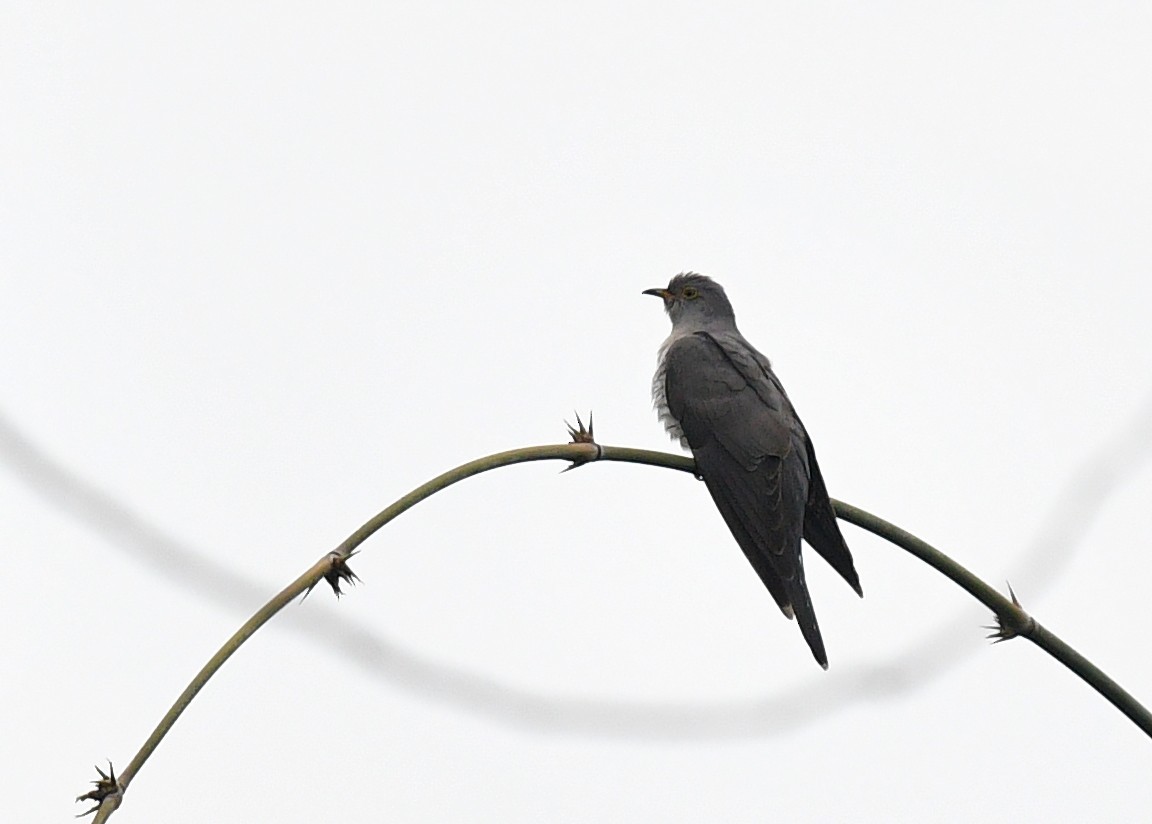Indian Cuckoo
A species of Typical Cuckoos Scientific name : Cuculus micropterus Genus : Typical Cuckoos
Indian Cuckoo, A species of Typical Cuckoos
Botanical name: Cuculus micropterus
Genus: Typical Cuckoos
Content
Description General Info
 Photo By Rofikul Islam
Photo By Rofikul Islam Description
This is a medium-sized cuckoo with both sexes alike. It has grey upperparts while the underside has broad black barring. The tail is barred with a broad subterminal dark band and a white tip. Young birds have white markings on the crown and white chin and throat contrasting with a dark face. Juveniles are browner and have broad white tips to the head and wing feathers. The eye-ring is gray to yellow (a feature shared with the common hawk-cuckoo). The iris is light brown to reddish. The female differs from the male in being slightly paler grey on the throat and in having more brown on the breast and tail. The barring on the belly is narrower than in the male. Nestlings have an orange-red mouth and yellow flanges to the gape. The call is loud with four notes. They have been transcribed as "orange-pekoe", "bo-ko-ta-ko", "crossword puzzle" or "one more bottle". In northern India, they can be locally common during the breeding season with densities estimated at a calling bird for every 2 km (0.77 sq mi). They feed on hairy caterpillars and other insects but sometimes take fruits. They usually feed on the upper canopy, gleaning insects, sometimes making aerial sallies for flying termites or rarely even by hovering lower near the ground. 
Size
33 cm
Nest Placement
Tree
Feeding Habits
Indian Cuckoo predominantly consumes insects such as hairy caterpillars, butterflies, grasshoppers, and ants, supplementing its diet with fruit. It typically forages in the high canopy, although it occasionally feeds on the ground, exhibiting adaptability in its feeding behavior.
Habitat
Indian Cuckoo predominantly thrives in varied wooded environments, including both deciduous and evergreen forests as well as secondary growth areas. This species is adaptable to drier regions and is typically found across broad geopolitical regions encompassing lowland and hilly terrains.
Dite type
Insectivorous
General Info
Feeding Habits
Bird food type
Behavior
The Indian cuckoo is a brood parasite. In Russia, females were found to pair with specific males during the breeding season. The male diverts the attention of hosts from their nest giving time for the female to lay her egg. It lays its single egg mostly in the nests of drongos and crows. Brown shrikes have been recorded as hosts in Russia. The female removes and eats an egg from the host nest before laying her own. The breeding season varies from May to July in northern China, March to August in India, January to June in Burma and January to August in the Malay Peninsula. The host species include Lanius cristatus in the Amur region, black drongo and Pica cyanea in China. In India, they have been found to be fed by black drongos and ashy drongo. Other hosts that have been recorded include black-headed oriole, streaked spiderhunter, Eurylaimus ochromalus and Dicrurus paradiseus. The eggs of the cuckoo hatch in 12 days while those of the brown shrike in the Amur region take 15 days. During the third or fourth day, the young bird bends its back when touched and heaves out other eggs or nestlings. This instinct is lost soon after. 
Distribution Area
The species is found widely distributed across Asia, from the Indian subcontinent eastwards to Southeast Asia. The preferred habitat is deciduous and evergreen forests but also occur in garden lands and thick scrub. Some populations in India migrate south in winter, although there are breeding populations in the southern areas as well, with specimens netted at night or recorded at lighthouses. The population in the Amurland of the Russia is migratory. 

 Photo By Rofikul Islam
Photo By Rofikul Islam Scientific Classification
Phylum
Chordates Class
Birds Order
Cuckoos and Relatives Family
Cuckoos Genus
Typical Cuckoos Species
Indian Cuckoo